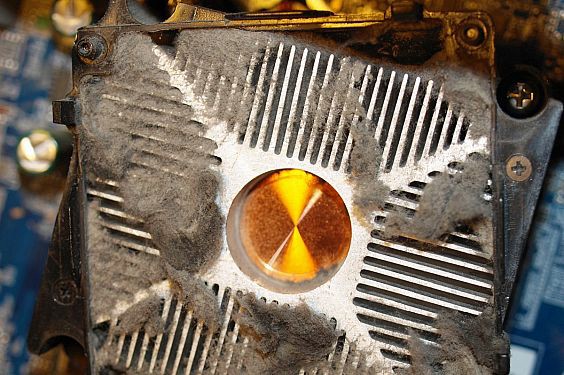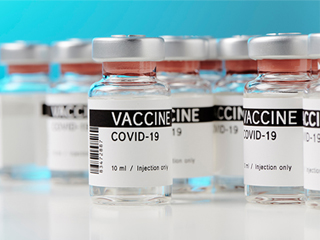The rise in air pollution has been the result of burning fossil fuels which became a mandatory practice in order to sustain the industrialization of the world. This is not only a problem for the living creatures, it poses a threat even in the technology industry. Due to changing modern world, where the need for information, communication, and networking is now a necessity for day-to-day survival. We can’t let pollution affect the operation of data centers. Preventive action like air quality monitoring is a must.
Damage caused by air pollution in a data center translate into a disaster for businesses and providers. Not to mention the probability of expensive maintenance bills or worst, data loss.
Mishaps like these can be avoided by meticulously monitoring and regulating the temperature levels within their server rooms. They do this by installing HVAC systems that maintain temperature and humidity within the prescribed levels. But the outside air, along with all the pollutants that it carries, can now enter the server room environment through these HVAC systems. They can also penetrate through the opening and closing of doors that employees use.
Pollutants in the Air of a Data Center:
Salt

Photo credit: www.dherbs.com/
In a study conducted in 2018 in Fort Myers by Ellsworth Heating and Cooling Systems, it was discovered that a lot of people are unaware of how salt in the air can do serious damage to their HVACs. Salt is composed of Sodium Chloride. They are carried in moist air in the form of particles. These particles then land on your equipment, creating a dust-like film on them that attracts moisture. The pairing of salt and water creates a corrosive substance that eats away at metal parts like aluminum, copper, and steel.
The air condenser on your HVAC is made of copper tubes, to which aluminum fins are attached that spin and rapidly disperse heat. When exposed to salt and moisture, the contact connecting the copper and aluminum begins to erode. This degradation of the metals can lead to a Freon leak. This will lead to a ripple effect where the corroded coils inhibit the free flow of air. This will then result in the lessening of its ability to disperse heat. We all know that in a data center server room, the ability to keep equipment from overheating spells the difference between a properly operating data center and a complete malfunction of the entire facility. Keeping data centers safe from air pollution caused by salt is one of the main precautions we can take to assure continued and efficient operation.
How to Keep our HVACs Free of Salt Pollution?
Having your HVAC checked by licensed technicians is one of the most prudent ways of staving off salt corrosion damage. Regular check-ups will allow your technician to detect any potential problems before they even occur. If any salt build-up is present, the technician will rinse the system and clean it.
This is the most cost-efficient method of maintaining your HVAC system. The loops are the most vulnerable component of your HVAC. Hose your system down with fresh water regularly. Cleaning your system every month will lengthen its lifespan.
-
Purchase the Right HVAC System
-
Install in the Right Location
The precise positioning of an outdoor unit is a significant factor in preventing damage caused by salt build-up. Make sure you hire only a licensed professional to do this job. They know exactly what they are doing. For example, if your data center is located in a coastal area or anywhere near the ocean, a duly licensed installation professional will position your outdoor unit in between the building and the salty ocean winds. This will allow your building to serve as a barrier that protects your outdoor unit from salty gusts from the sea. The technicians will also be exposing your unit to rainwater, which will naturally rinse off any salt residue on the surface of your unit.
-
Apply Anti-Corrosion Coat
You may also opt to have a technician apply a protective coating to specific parts of your HVAC system to keep them from corroding. For instance, an aluminum oxide coating will protect aluminum parts, while an iron oxide coating will likewise protect iron components. The coat protects your HVAC parts from corrosion and damage and will assure efficient and continuous operation.
Make sure the surroundings of your HVAC air vents are clear of all obstructions. Do not place random objects or leave tools lying around the cooling vents. These can disrupt the unimpeded flow of cold air from reaching your servers. They will also make your HVACs exert greater effort when cooling your data center server room. When it comes to keeping your data centers safe from air pollution, these are just a few tips to make sure that one of the instruments that make this possible is kept in tiptop working condition.
Dust

Photo Credit: medium.com
Dust is another one of the pollutants that can make its way into your data center through your cooling systems. High concentrations of dust in the air can make it too dry. Its presence can greatly reduce the efficacy of heat sinks and cooling systems. It can also double the energy required to keep your temperature at the perfect cooling level. This can prove to be a costly headache for your data center.
Harmful Gases
Harmful gases like sulfur dioxide, hydrogen sulfide, and particulate matter can also end up in the atmosphere of your data center. These contaminants can easily degrade your computer circuitry. They can also elevate temperatures within your facility, causing cooling equipment to go into overdrive.
So How do we Remedy this Problem?
There are 2 methods in dealing with the problem of keeping data centers safe from air pollution.
Air Filter/ Purifiers
They have been proven effective in reducing the presence of pollutants in a data center environment. They are touted for increasing the quality of air purity and extending the life of your data center systems. Industrial and commercial enterprises that require large data processing centers often utilize these helpful tools in their day-to-day operations. Some air purifiers even employ plasma cluster ion technology, which is based on natural phenomena. This technology can help eliminate static electricity, as well as maintain a sterilized operating atmosphere in your server rooms.
Types of Air Purifiers:
-
Basic and HEPA Filters

Photo Credit: www.pranaair.com
The most common type of air cleaner consists of foam, fiberglass, cotton, or other particle-trapping materials. They work by allowing air to pass through the filter through your HVAC system or independently via a free-standing model. The particles in the air are caught in the filter, requiring them to be changed every month or the particles will accumulate inside of them. The MERV rating determines the quality and strength of your air filter. The higher the MERV rating, the better the filter. HEPA filters are the most powerful filters in the MERV rating scale. You need an HVAC system that’s powerful enough to manage it.
-
Ionizers and Ozone Generators
Ionizers and ozone generators operate the same way, but they generate slightly different molecules. They give out either charged ions or charged ozone. Ordinary particles in the air carry a neutral charge. When they interact with the ozone or ions, they become charged as well. This allows them to adhere to surfaces instead of simply floating around. But people with respiratory ailments are prone to lung irritation because of the ozone. When this happens, use a different kind of filter.
These types of filters charge the particles in the atmosphere. It purifies them by allowing them to adhere to the inside of the machine and collecting them there. You can pull out the plates where the particles have stuck, and simply wash them before reusing. Electrostatic filters generate ozone which gives out an electrical charge that kills particulates, microbes, and mold spores.

Photo Credit: www.gairsolutions.com
Activated carbon filters are usually paired with another type of air purifier. The carbon in an activated carbon filter catches odors and gasses and eliminates them from the air. Some of these activated carbon filters are even powerful enough to handle complicated organic compounds. When some air filters are unable to erase unwanted odors, an activated carbon filter is where you turn.
UV lights are germicidal air purifiers that kill microbes and even viruses. You can have one of these installed in your HVAC system. Position them above the coil, where mold and particulates germinate. Position another set adjacent to the air handler to clean the air before it circulates all over your data center.
Due to poor air quality caused by worsening air pollution, many data centers in urban areas are experiencing an increase in mechanical failures. This showcases the need for an effective air quality monitoring system.
Air Quality Monitoring System helps detect the concentration level of harmful gases like SO2, H2S, CO, in the data center. These gases are not just harmful to humans but more so to the equipment of your data centers.
AKCP has air quality monitoring sensors that can detect particle sizes PM0.5, PM1.0, PM2.5, PM4, and PM1. Wireless Air Quality Sensor can also measure the mass concentration of particles in the PM1.0 to PM10 range and particle number concentration in the PM0.5 to PM10 range. Some of the harmful air particles which can be detected using this sensor include:
- Acetone (eg. paints and glues)
- Toluene (eg. furniture)
- Ethanol (eg. perfume, cleaning fluids)
- Hydrogen Sulfide (eg. decaying food)
- Benzene (eg. Cigarette smoke)
Conclusion
It is very clear that air quality monitoring in data centers is one of the most significant precautions that can take to ensure optimal working conditions. Keeping tabs on the level of different air pollutants in your data center facility can help you make effective preventive measures. Pollution should not affect your data center performing at its best. This not just to save your pockets but also your integrity and client’s trust. Don’t risk it, trust the experts on this!









